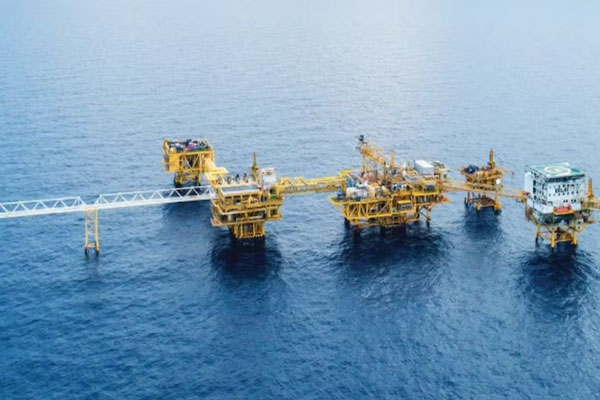Contents
Erawan Field

Introduction
The giant Erawan gas field offshore Thailand has served as the cornerstone of the country’s tremendous rise as a major petroleum producer over the past five decades. Discovered in 1971, Erawan was the first in a series of prolific natural gas finds in the Pattani Basin that transformed Thailand’s energy security and economy.
Favorable conditions enabled the swift development of Erawan in the 1970s. Since start-up, the field has produced over 11 trillion cubic feet of gas, meeting up to a quarter of Thailand’s domestic demand at its peak. While now mature after years of production, Erawan remains a vital part of the country’s gas supply today.
This article provides an overview of Erawan’s discovery, peak production history, current status, and significance for establishing Thailand as a regional energy power. Operated throughout by multinational companies, the supergiant field highlights how Thailand capitalized on its natural gas reserves to serve national development. Continuous enhancements keep Erawan delivering key volumes as the country’s first and largest offshore gas project.
Discovery and Early Development
Exploration in the Gulf of Thailand’s Pattani Basin began in the early 1960s, led by Shell based on a concession awarded in 1961. Drilling commenced on the southern basin flank, with the first discovery being the small onshore Rayong gas field in 1962.
Attention turned offshore, with Shell drilling the milestone Erawan-1 exploration well in 1971. Erawan-1 encountered a significant natural gas reservoir in the basin’s prolific lower Pliocene sands at a depth of around 3000 feet. Appraisal drilling defined over 11 tcf of recoverable reserves.
With a giant gas find on its hands, Shell moved swiftly to develop the Erawan field given favorable conditions like shallow water of just 180 feet. The wellhead platform Erawan-A was installed in 1975, with first gas production coming online in 1981. Rapid ramp-up supplied much needed energy to Thailand.
Peak Production
With infrastructure in place, Erawan’s gas production was quickly scaled up to meet surging domestic electricity demand in Thailand through the 1980s and 90s. Tens of development wells were drilled from the Erawan-A platform and subsequent Erawan-B platform installed in 1983.
By the 1990s, Erawan had become the giant of Thailand’s gas production. Output exceeded 700 million cubic feet per day at its peak – over a quarter of the country’s total gas demand. This supported dramatic economic growth and industrialization.
Before overseas exports commenced, Erawan gas was the primary fuel for power generation and industrial facilities in the populous lower Gulf region. Cumulative production has reached over 11 trillion cubic feet to date, making Erawan one of the most prolific gas fields in the Asia Pacific.
Chevron Takes Over Operations
In 2005, Chevron acquired Shell’s stake in Erawan and became the new field operator. This marked the departure of Shell after nearly 35 years of oversight.
Chevron moved to sustain Erawan’s gas production while adding oil output. The company developed two satellite oil fields called Jasmine and Maniya in the 2000s, enabling condensate exports. Enhanced recovery efforts were also initiated.
New 3D seismic data supported an additional drilling campaign at Erawan. Compression capacity was added in 2009 to maintain plateau production as pressure declined. Infill wells continue to be drilled to target pockets of remaining reserves.
Under Chevron, production at the aging Erawan field has been sustained through leveraging technology and maximizing lateral development. Output has been maintained averaging over 500 mcf/day for nearly a decade. Chevron is focused on extending field life.
Current Infrastructure and Activities
The Erawan field today contains two wellhead platforms that serve as the production hubs – Erawan-A and Erawan-B. These are connected to quarters and compressor platforms.
Erawan-A, installed in 1975, processes production from over 30 wells. Erawan-B came online in 1983 and handles another 20 well streams. The living quarters platform houses up to 300 workers to support offshore operations.
Gas production flows through a network of pipelines to an onshore gas separation plant at Rayong. Condensate is also piped onshore for export. Chevron continues infill drilling and well workovers to boost output.
Advanced seismic imaging aids in identifying remaining pockets of reserves. Further development opportunities likely exist within deeper geological formations. Production stands at over 500 million cubic feet daily – still vital for meeting Thailand’s energy demand.
Erawan’s Significance for Thailand
The Erawan field holds tremendous historical significance for establishing Thailand as a major gas producer. The discovery in 1971 set the stage for the country to exploit its hydrocarbon resources for national development.
Erawan gas fueled electricity generation and industry in the pivotal lower Gulf region. Billions of dollars in government revenues aided economic growth during the production boom years. Energy exports also eventually commenced.
With over 11 TCF produced to date, Erawan facilitated Thailand’s modernization and rise from a largely agrarian nation to an industrialized economy. As the first and largest offshore gas project, Erawan enabled Thailand to realize its hydrocarbon potential.
Though mature after years of production, Erawan remains a key part of gas supply through continuous enhancements. Its development represents a model for monetizing natural resources to serve the greater good. Erawan spurred Thailand’s ascent as a regional energy leader.
Conclusion
In conclusion, the supergiant Erawan gas field provided the foundation for Thailand’s emergence as a major petroleum producing nation over the past half century. Discovered in 1971, timely development amid favorable conditions allowed swift ramp-up to supply Thailand’s surging electricity demand.
Peak production was achieved in the 1990s before handover to Chevron as operator in the 2000s. Chevron has maintained robust output through enhancing mature reservoirs. More than 11 trillion cubic feet produced to date, Erawan has powered Thailand’s growth.
While depletion is inevitable, Erawan remains vital today through innovations that stretch field life. The strategic development of Erawan resources established economic prosperity and energy security. As Thailand’s first and largest offshore gas project, Erawan ushered in a new producing province and era.

